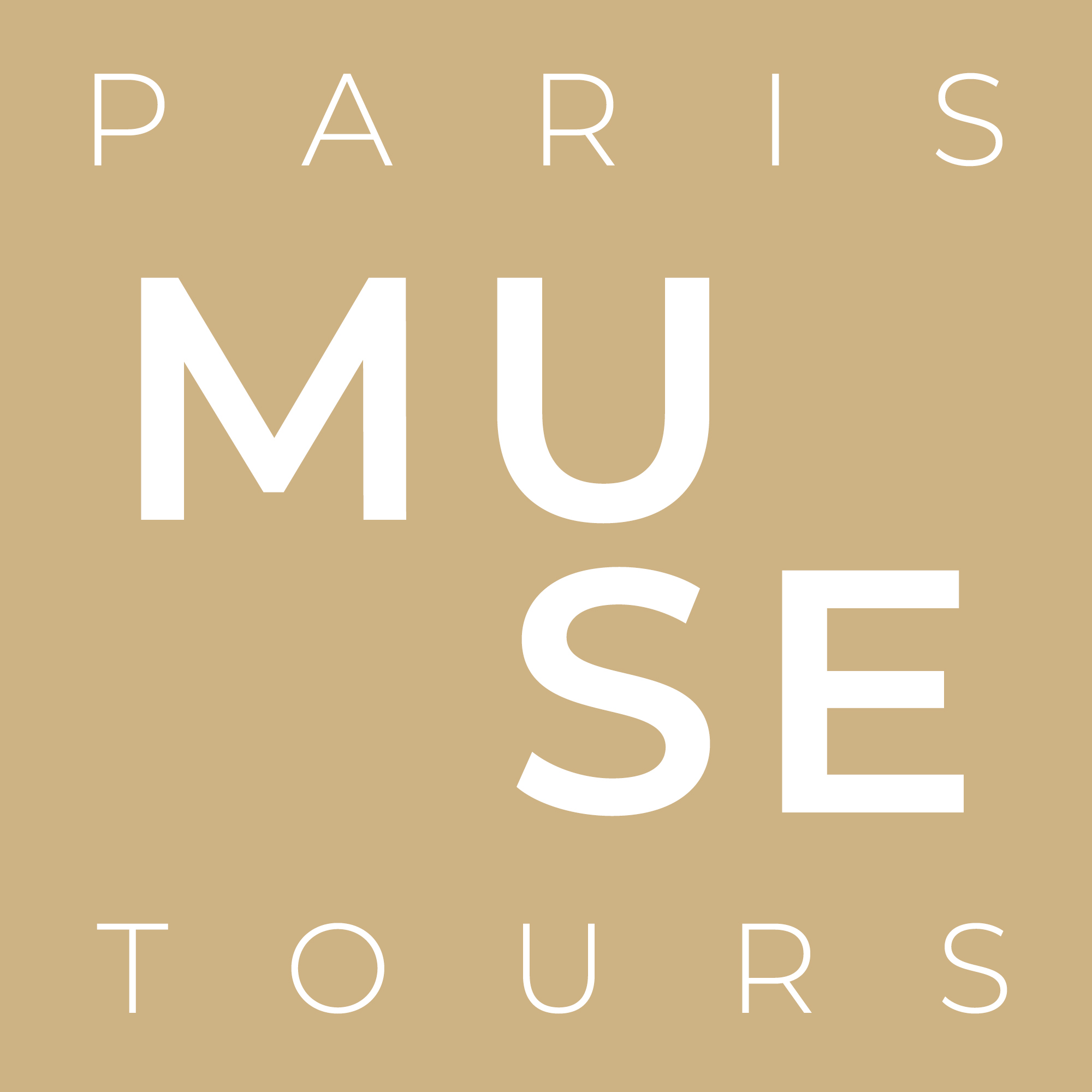 When docent Emma Durrant is not leading treasure hunts in the Louvre, or making “buildings talk” for families in the Marais and at Notre Dame Cathedral, she is busy researching new programs for Paris Muse. She developed “Louvre Quest,” a tour for teenagers in the Louvre. We sat down to talk to her about this exciting new tour.
When docent Emma Durrant is not leading treasure hunts in the Louvre, or making “buildings talk” for families in the Marais and at Notre Dame Cathedral, she is busy researching new programs for Paris Muse. She developed “Louvre Quest,” a tour for teenagers in the Louvre. We sat down to talk to her about this exciting new tour.
We’re excited about the recent launch of the new Louvre tour for teens you’ve worked so hard on, Emma. Could you tell us about “Louvre Quest?”
This Louvre program is a quest packed with the same kinds of characters found in stories, films, and games for young people. Our goal is to show teenagers how the objects they see in the museum are not just artefacts, but living evidence of so many great, universal human adventures. These adventures have taken the form of a search, or quest, for something: power, immortality, love. As teens travel throughout the galleries, they will search for different artworks using “quest cards,” with each set being introduced by an archetypal character who helps lead their way. One of the characters is a threshold guardian who tests a hero’s worthiness; another is a goddess who holds the key to a secret. They are all based on artworks from the Louvre.
Could you describe an object from the Louvre that families learn about on this quest? Also, tell us why you think it’s relevant to a teenage museum visitor today.
The Great Sphinx of Tanis is one of the largest sphinxes outside of Egypt, and it’s more than 4500 years old. This sphinx once guarded the path to the temple of Amun in the ancient city of Tanis.
The mythic figure of the sphinx appears in many regions across the ancient world, from Persia to Egypt. His job is to guard the gateways to sacred places, keeping watch and testing the worthiness of those who dare to venture past. Only those who use their wit and resources to meet the sphinx’s challenges gain passage to a world of adventure.
Teenagers are on the cusp of adulthood, and so many of them are preparing to meet life’s unknown challenges. The Great Sphinx of Tanis is like an ancient, 28-ton metaphor for where today’s teens are, in the adventure of their own lives.

Jason Vrooman
Docent Jason Vrooman leads our Muse programs at the Louvre, Musée d’Orsay and the Centre Pompidou. When not giving tours or working on his PhD, he can be found scouring the city for culinary delights. In between, Paris Muse had the chance to ask Jason for a few Paris insights.
What drew you to Paris to study art history?
Paris was the beginning of my love affair with art history. I took my first art history class when I was studying here during my junior year abroad. The course was on 19th-century French art, and my teacher’s enthusiasm hooked me. We used to joke that you could pick up a stone from the streets of Paris and she could tell you its history. The Louvre and the Musée d’Orsay were literally my textbooks. I “discovered” the Nabis while wandering through the Musée d’Orsay and now I’m writing my dissertation on those artists: Vuillard, Bonnard, Denis, etc. Since many of their works are here, I’ve found the perfect excuse to come back to Paris.
So, Paris and its museums fuel your scholarship. Is it ever difficult to remain focused on your work with so many cultural distractions around you?
Sometimes, yes! But the nice thing is that when I’m stressed, just spending time in a gallery can calm my nerves, whether I’m visiting “old friends” or seeing something new. And if I’m lucky, I’ll happen upon an artwork that will get me excited about my dissertation. I was exploring the drawings galleries at the Musée d’Orsay the other week while waiting for a lecture to begin, and happened upon a gorgeous Maurice Denis drawing of two men sweeping in a pastel landscape. It was strange and beautiful and will probably end up in my dissertation! Paris’s museums can be filled with wonderful surprises like that if you keep your eyes and mind open.
Tell us about some of your favorite less-frequented museums that help you recharge your art batteries.
Given that I study the Nabis, I love the Maurice Denis Museum in St-Germain-en-Laye, an easy train ride outside of Paris. The Nissim de Camondo, the Jacquemart-André, and the Cognacq-Jay are wonderful small-house museums, and give you a sense of what it’s like to live with art. The Musée Guimet houses fabulous Asian art in a beautiful architectural setting. And the Gustave Moreau Museum is wonderfully odd: there’s something so intimate about flipping through drawing after [sometimes macabre] drawing in the artist’s former studio.
Let’s talk about another Paris passion of yours: food. Could you tell us about a culinary discovery or two?
Eating smoked eggplant at Frenchie. I can’t even describe how amazing it was. It had taken on a dark, smoky flavor, and almost had a meaty quality. Frenchie changes its menu seasonally—and often daily, based on what looks good at the market—so it may have been a once-in-lifetime experience.
The pork at La Régalade (and La Régalade Saint Honoré) is also to die for: a perfect balance of tender and and crispy layers. And the homemade pickles and terrine to start and Grand Marnier soufflé to finish aren’t so bad, either.





